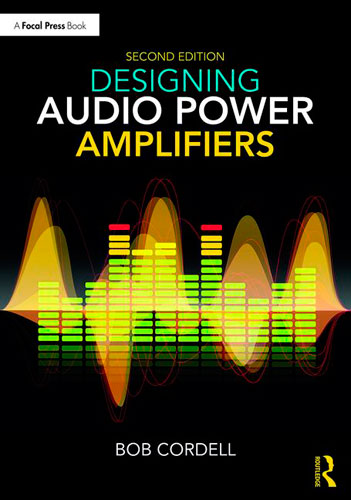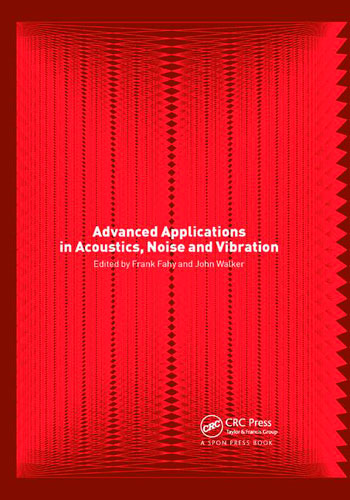BOOK REVIEWS
Summaries of recent selected book reviews from the AES Journal
< Back to table of contents

Designing Audio Power Amplifiers. 2nd ed. Bob Cordell. A Focal Press Book, Routledge, 2019.
https://www.routledge.com/Designing-Audio-Power-Amplifiers/Cordell/p/book/9781138555440
AES Reviewer: Dennis Fink, Fink Analog Audio, Warwick, New York
Dennis Fink says "I enjoyed this book and heartily recommend it to any engineer just starting in amplifier design and also to any veteran amplifier designer working in the industry. Because of the tiered approach of the first three parts of the book, its usefulness will grow with you as you become more proficient at amplifier design. I’m happy to find a place for this book in my technical library, as should you." Dennis points out that it’s a complete text, ideal for newcomers to amplifier design engineering as well as a great reference for practicing audio design engineers already working in the industry. There are six sections starting with Audio Amplifier Basics. It then moves into Advanced Power Amp Design Techniques, followed by Real World Design Considerations, and Simulation and Measurement. Topics in Amp Design looks at things like bridged amplifiers and IC amplifiers, as well as some professional designs, while the final part deals with Class D amplifiers.

Advanced Applications in Acoustics, Noise and Vibration. Frank Fahy and John Walker, Eds. CRC Press, Taylor & Francis, 2019.
AES Reviewer: Todd Busch, Veneklasen Associates (Canada) Inc., Toronto, Ontario, Canada
Todd Busch's review starts out by explaining that this edited work is based on the contents of a graduate course offered by the Institute of Sound and Vibration Research (ISVR) at Southampton University in the UK. "The content of the various chapters focuses on concepts, underlying principles and techniques, and, according to the editorial preface to the book, is not intended to be a handbook with readily applied sets of data and expeditious solutions to problems," says Busch. "The level of complexity suggests undergraduate academic science and/or engineering and professional practice is required to fully understand the various formulas and theories that are presented within." Part one of the book deals with signal processing, whereas the second part looks at acoustic modelling in various ways. The third part has to do with environmental and industrial acoustics, while the final section concerns vibration.
Busch concludes: "The contents of this book were assembled by people who would, in a different world than the one that seemingly exists, be heralded as heroes of a scientific revolution. Change the world? Buy this book."
Read the full reviews from the April 2020 AES Journal >
